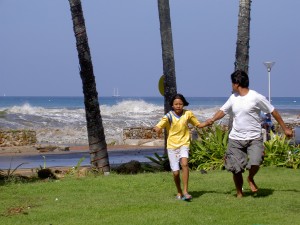Search Results for Tag: user-generated content
Creating Asian guidelines for user-generated content
The Asian tsunami of 2004 and the Japanese earthquake and tsunami this year were two occasions where broadcasters around the globe relied heavily on user-generated content (UGC). They aired videos people had taken with their mobile phones, pictures snapped with digital pocket cameras or they simply broadcast information users had sent in via e-mail or as text messages from remote places.
These days, many radio and TV stations encourage their audiences to contribute material to their broadcasts. This gives them access to footage professional crews couldn’t otherwise get – or couldn’t get that quickly. And it gives the audience a voice, creating a two-way conversation with the broadcasters and making people feel like the broadcaster is there for them, picking up their stories and addressing their concerns.
Making the most of user-generated content
But how can broadcasters safeguard the quality and suitability of such content? After all, it’s supplied by regular listeners or viewers: amateurs, not trained journalists. Citizen reporters haven’t necessarily been taught the journalistic basics every professional has learned, like how to research facts, how to report accurately and how to be fair to all sides.
![]() read more
read more
The pros and cons of user-generated content
Radio and TV audiences today don’t just want to be spoken to by broadcasters; they want to join the discussion. They want to share their views and stories, and modern communication tools like mobile phones, digital cameras and the internet give them that opportunity.
Broadcasters who do not grasp this fundamental change in communication behavior may soon find themselves bypassed by social media sites like Facebook and Twitter.
In order to stay relevant, radio and TV stations have to find new ways of integrating the audience into their programming. On the simplest level, this can be done by taking letters and e-mails from the audience seriously. A next level can be call-in programs, which center on listeners’ concerns, questions, comments and experiences.
![]() read more
read more






Feedback